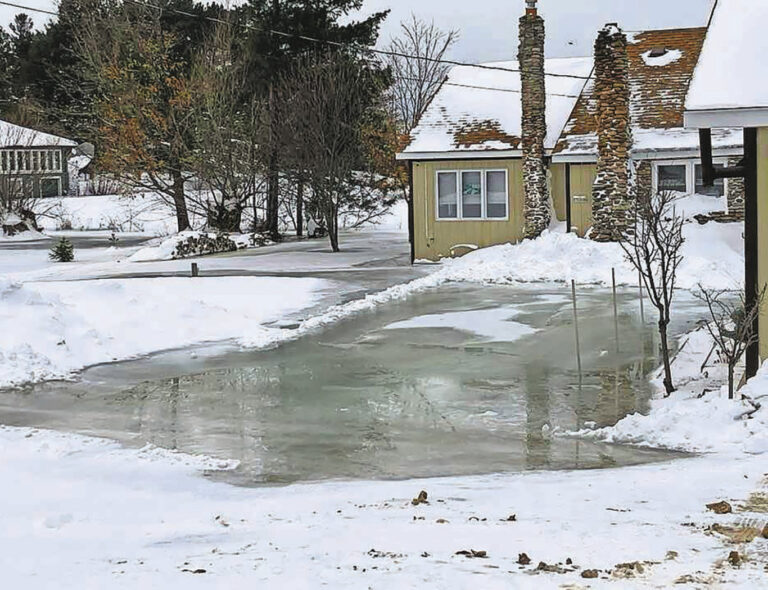Au Train is starting to dry up after major flooding near the river delta. As of Thursday deadlines, the water had dropped 2.25 inches and was lowering at three-quarters inch per hour. The river is flowing and water is expected to continue to decrease.
Alger County Administrator and Emergency Manager Steve Webber said that the storm displaced sand underneath the ice, preventing flow into Lake Superior. Removing the sand was the key and after all the emergency permits were received, workers from Seaberg Enterprise were able to hop on an excavator to make the necessary holes in the build up. Work started at 9:30 a.m. on Wednesday getting the process started, with further monitoring to maintain the drainage safely for workers and to reduce risk of any potential washouts impacting the M-28 bridge over the river.
When the ice was too cracked or the water flow was too far from the shoreline for people to access the flow, the county used its emergency drone to monitor the water.
To properly apply for all of the permits, Au Train Township held an emergency meeting on Tuesday, Dec. 27. Roughly 30 people attended, with four of the five township officials able to attend. Officials rushed to make a vote so the final emergency permit with the Michigan Department of Transportation could be completed. MDOT’s requirement of voting on a performance resolution as part of the permit was declared after an MDOT foreman appeared after the Army Corps of Engineers and Michigan’s Energy, Great Lakes and Energy (EGLE) already granted permission to proceed in opening up the river. This is according to a post made by Au Train Township’s official Facebook page.
Given MDOT’s extra checks and requirement for a board vote to pass the resolution, the flooding built up for another seven hours before crews could open up the river. The delays pushed the start of the opening well past sundown, creating significant safety concerns for the crews as well.
According to local emergency management, the permitting was quick given the circumstances.
“I’m amazed it went as fast as it did. With Christmas, it wouldn’t matter what tree you shook, you weren’t getting a permit,” Webber said.
The flooding has created a public health issue regarding safe drinking water and septic fields. LMAS, the regional health authority, has issued guidelines regarding flooded areas. Michigan State Police has also issued guidelines for sandbagging protocols, but sandbagging has been mostly ineffective given the ground flooding. Most residents have protected their property by running sump pumps consistently.
Flooding in Au Train is not unheard of, as buildups due to ice or sand have created natural dams near the Au Train River delta dozens of times. However, the quick rising of waters due to the blizzard and threat of more precipitation this weekend have local residents asking why more cannot be done.
“What I’m asking for tonight is at some future date we start establishing a protocol to fix this,” Au Train resident Nancy Bailey said at the Tuesday meeting. “We hope that we don’t have to leave our home, but have to take a serious look at this.”
For the residents struggling with the floodwaters for over 24 hours at that point, watching the waters continue to rise during the permitting process, was an insult.
“What’s the point of applying for a permit? It’s an emergency. An emergency permit. We should be able to call one person or one office and it’s done,” Tom Hill said.
According to Au Train Township Supervisor Michelle Doucette, Clerk Mary Walther Johnson and Webber, finding the right way to get the process done can be difficult. According to Army Corps of Engineers protocols, the smallest level of government – in this case, Au Train Township – must pay for any fixes. Groups like MDOT or EGLE could also sue for property damage in case something was damaged in the process of draining the flooded areas.
